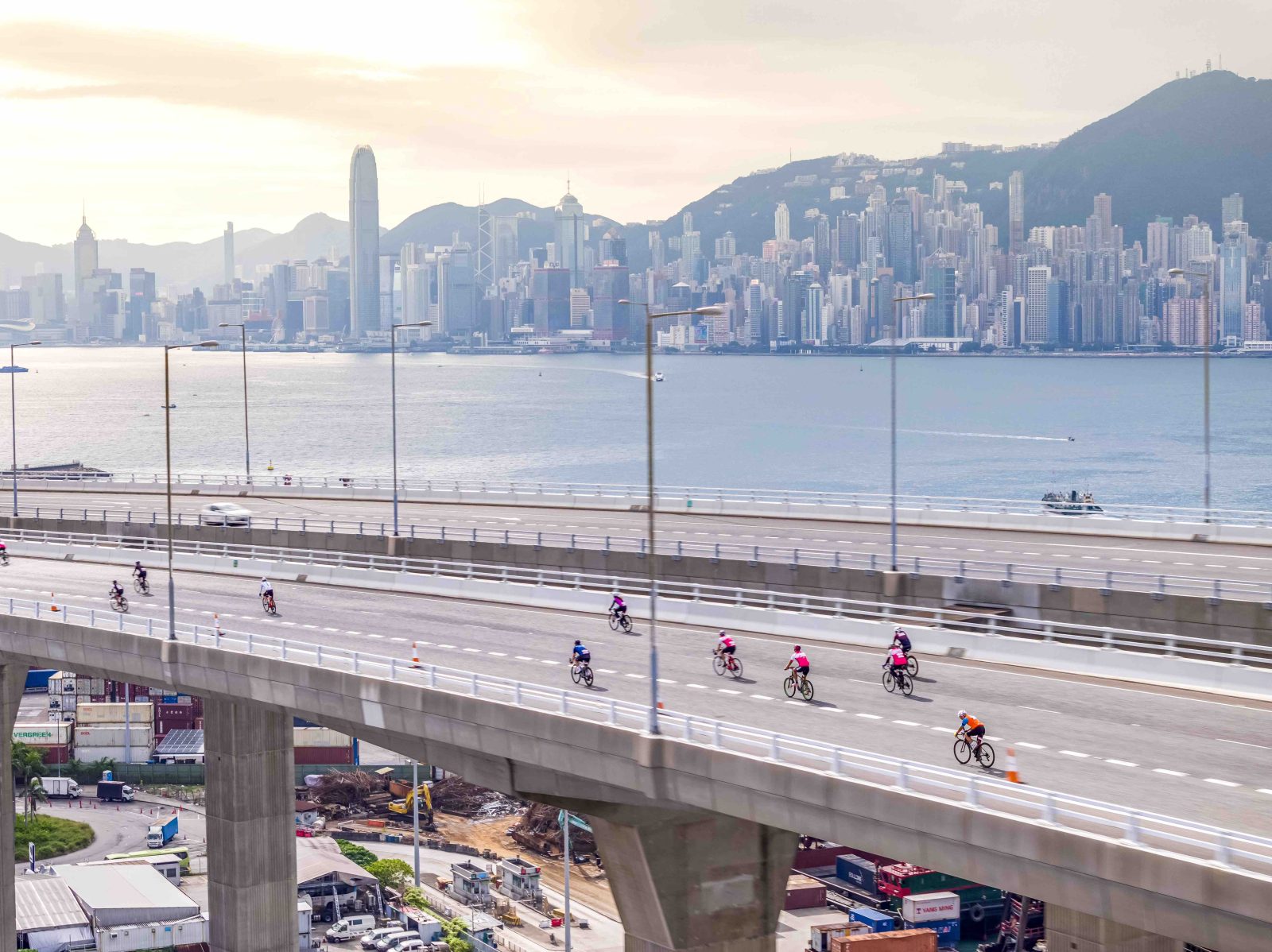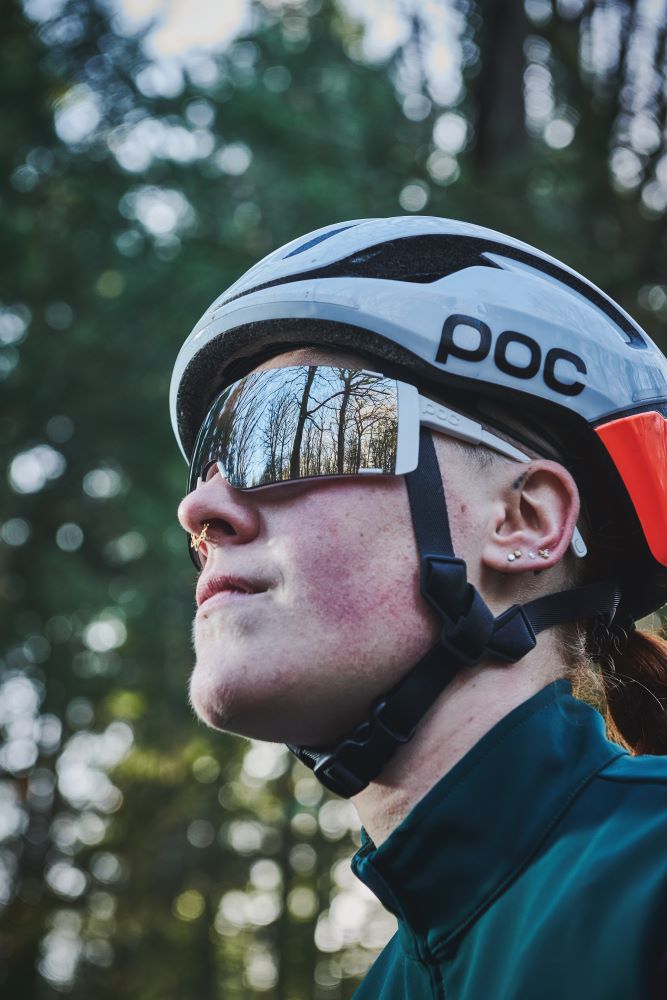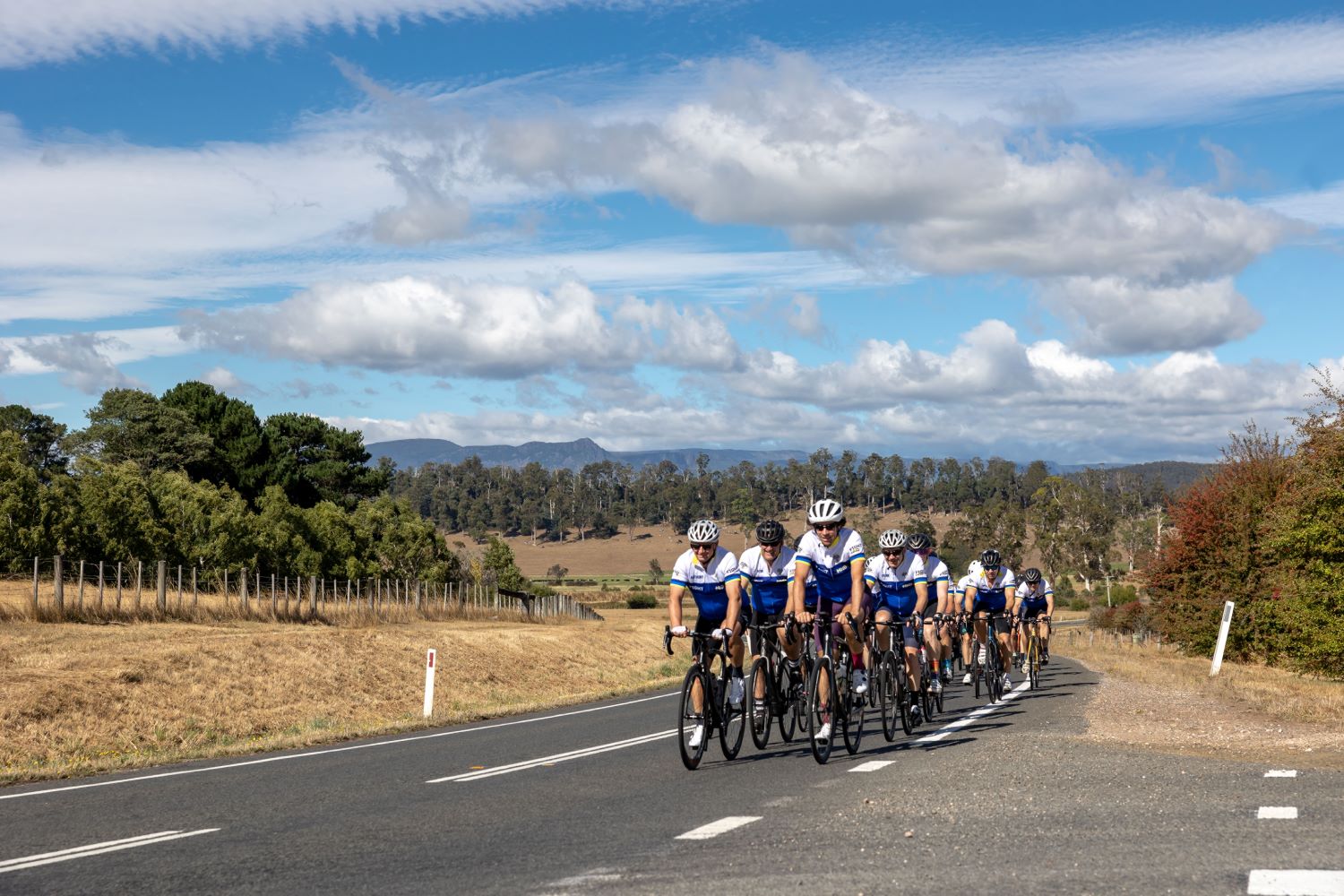The pros have a long history of training at altitude, but can the ordinary rider benefit from raising their game?
Altitude training was a staple of the pros long before we ever heard the phrase ‘marginal gains’, with teams routinely camping atop mountains in search of precious extra performance. Back at sea level, stories abound of riders sleeping in altitude tents or being herded into altitude-simulating dorms, and of training protocols involving more haring up and down from altitude than a mountaineer can expect in a good season.
‘Everybody does it,’ says Belkin Pro Cycling team performance manager Louis Delahaije. ‘When we were in Tenerife before the Giro for our altitude camp everyone was there: Froome, Nibali, Basso, all the major teams.’
But what about the average cyclist? Should the rest of us be heading for the hills, installing tents in our spare rooms, or hammering out intervals in the nearest altitude chamber on a weekly basis? And even if we simply go on a riding holiday to the Alps or the Pyrenees, will we see a performance boost? The answer is a complex one.
It’s in the blood
Ferran Rodriguez of the national institute of physical education in Barcelona is a leading expert on altitude training in sport and the man behind the largest international study into the practice to date.
‘When you expose yourself to hypoxia [oxygen deficiency] at altitude or in a simulated environment there are two benefits. One is a blood adaptation through the stimulation of natural erythropoietin [EPO] levels. This increases red blood cell production, meaning you can carry more oxygen. The second is tissue adaptation. Some research suggests altitude training can cause positive benefits at a muscular level’.
However, the jury’s still out on the muscular benefits for now and in Rodriguez’s opinion, ‘even the best tests have not shown any real [muscular] adaption’. As far as cycling’s concerned it’s the blood-based benefits that
are proven to give a clear advantage, so it’s the quest for those we’ll concern ourselves with.
The number one method for achieving this is the ‘training high, living high’ approach, aka ‘altitude camps’. A staple on the pro scene, these mean a
long stay at altitude.
‘You need to be above 2,000 metres and below 3,000,’ says Rodriguez. ‘Any higher will negatively impact sleep and recovery. You need to stay for three to four weeks. This will increase your total haemeoglobin [the oxygen carrier within red blood cells] by as much as 8% and your VO2 max by roughly 50% of the same amount. So raising haemoglobin mass by 8% boosts VO2 max by 4%.’
These figures are the gold standard for altitude training and are seriously alluring. But they’re hard to hit.
‘It’s very difficult to manage an altitude camp,’ says Delahaije, who’s been running them since 1996. ‘You never know how riders will react as it varies for everyone. Some arrive and can train straight away, others need time to adapt. As a trainer you have to watch your athletes very closely. With some you do big rides early; others need to rest until they feel better before starting.’
There are also problems with sleep and immunity. ‘People think altitude training is free of negatives but that isn’t true,’ says Rodriguez. ‘At altitude you may have problems with your sleep, and your immune system will be depressed, so your risk of infection or injury increases.’
This is a situation Delahaije knows well. ‘On an altitude camp we will see riders are more likely to get sick,’ he says. On the flipside there are stories of pros using altitude sessions to boost immunity, the theory being that by regularly stressing the immune system under altitude conditions you could make it stronger – but these reports are largely anecdotal.
Anaemia is another risk of living and training at altitude, as Rodriguez explains: ‘If your body’s iron stores aren’t good when you arrive you won’t be able to produce the red blood cells needed, so may even become anaemic,’ he says. Finally, timing is critical. ‘The benefits of altitude training don’t last long. Four or five weeks after training, the blood advantages are gone.’
That’s not to say all the benefits will have disappeared however. Michael Hutchinson, winner of 56 national time-trial titles and author of Faster: The Obsession, Science and Luck Behind The World’s Fastest Cyclists, explains, ‘You can get a cumulative effect from altitude training beyond this period because you’ll be able to train harder when you get back to sea level, so you can probably build on the effect from one altitude camp to the next.’
But it’s not simply a question of coming back down and smashing it. There’s a post-altitude dip to contend with. ‘For the first week after you come down you feel great, but some riders in the second week can feel tired and sick,’ says Delahaije. ‘After this you have another good window of three or four weeks. We use the first good window for a small race after any camp, then the second more stable good window for major tours.’
All this means logistics are a major issue for anyone using altitude training to prepare for specific events. When you need to hit this second window for day one of a Grand Tour, altitude camp dates are set in stone and the globetrotting to beat the weather begins.
‘Before the Giro we’re in Tenerife, before the Tour de France we’re in the Sierra Nevada, and before the Vuelta it’s Park City in Utah,’ says Delahaije. He’s also been investigating the celebrated marathon runners’ altitude camp in Iten, Kenya. ‘It’s very good, but complicated for us because there aren’t many good roads.’
Down to earth
All in all, an 8% increase in your EPO levels and 4% on your VO2 max doesn’t come cheap or easy. That’s why altitude tents and a host of slightly simpler protocols have sprung up over the years. There are two basic methods: the first is called ‘live high/train low’ (aka ‘altitude sleeping’) and involves sleeping at simulated altitude using an altitude tent while training normally at sea level; the second is called ‘live low/train high’ (aka ‘intermittent hypoxic training’) and requires sea level living while also training with short, sharp bouts at simulated altitude using a mask that delivers air with less oxygen.
The latter is the easiest to manage but also creates the least results in terms of blood adaptation. ‘It won’t increase your haemoglobin mass,’ advises Rodriguez. ‘You’re not exposing yourself to “altitude” for long enough. You need at least 12 hours a day for seven to 10 days to start that process.’
Intensity is all, according to Richard Pullan, founder of The Altitude Centre, a company specialising in sea-level altitude preparation. ‘There’s not much point in doing moderate exercise in a hypoxic chamber when you could just go harder at sea level. Where the real benefit comes is with hard sessions.’
The real problem, and one that affects any altitude-based training, is that of perceived exertion versus real exertion. It’s one of the biggest distorting factors of any altitude training’s efficacy and requires careful management when undertaking any such training.
Producing a particular power output is harder under altitude conditions, so training here will almost always feel harder. This means anecdotal evidence, even from pros, suggesting that because it’s harder it must be good needs treating carefully. It may be beneficial, and the placebo effect of having undertaken such apparently demanding training may also improve performance, but in real scientific terms gains are not guaranteed.
Worse, if it’s not monitored, actual energy expended under altitude conditions could even be lower (despite feeling harder) than a corresponding session at sea level, resulting in an inadvertent and costly spell of de-training.
‘If your heart rate is 150bpm for an effort at sea level and you then go to 2,000m, you’ll need to be at around 170bpm for the same exertion,’ says Rodriguez. ‘You can’t hold that intensity for more than 10 minutes, whereas you could do the same session at sea level for an hour or more.’
Hutchinson agrees: ‘At altitude you may not be able to train at the intensity you need. There’s a risk you can train your aerobic system but de-train your muscles. Yes you’ve got reduced blood oxygen generating EPO release, but if you’re a sprinter or a track rider and you need to regularly hit 600 watts, you haven’t got a prayer of being able to do that at altitude. But for a climber, where most of what you do revolves around relatively modest torque on the pedals but requires an enormous aerobic system, it’s probably going to help.’
So if you’re using altitude in your training but also have goals it can’t serve, you need to regularly return to sea level to reach them. This means heading somewhere like Tenerife where you can sleep and train at altitude and at sea level nearby. Or it means using simulators for your altitude time while training normally at sea level, which is where a ‘live high/train low’ strategy of sleeping at altitude for long periods will help blood adaptations while you’re training at sea level to maximise output.
To further illustrate just how complex things can get, Hutchinson says that when British pro Alex Dowsett was living in Boulder, Colorado (altitude 1,655m) he was training once or twice a week with supplemental oxygen so he could hit the intensity he needed during short, hard sessions to keep his sprint pace. As Hutchinson puts it, ‘That’s the kind of detail you have to start looking at to compete at that level.’
Heightened performance
On the subject of detail, altitude and outright speed are closely linked. Ascend to the right height and you can guarantee being faster.
‘There is a net gain for aerobic athletes with altitude,’ Hutchinson says. ‘It’s harder, but you will ride faster. You produce less power because there’s less oxygen, but the reduced air drag compensates and there’s a sweet spot of 1,800-2,200 metres where if you could ride at 50kmh at sea level, you could expect to ride at 52kmh. It would be the ideal height for tackling the World Hour Record, say.’
This is something Pullan backs up. ‘We worked with some riders going for the hour record and they were doing everything at 1,800 metres,’ he says. ‘That’s the optimal height to minimise drag and altitude negatives over 60 minutes.’
Free speed, free natural EPO and more VO2? If all the costs, logistics and pitfalls from illness and undertraining to short-lived effects and loss of sprint power haven’t put you off heading for the hills yet, there’s one more matter to address and that’s doping. Determining how effective altitude training is based on historic results will always be tainted by its long shadow.
‘For years there was no point altitude training when you could just take artificial EPO, which is a great deal more effective,’ says Hutchinson. ‘Any attempt to draw historical lines around altitude training and cycling in the last 20 years will continually hit that problem.’ Not only could results showing its benefits have been skewed by foul play, altitude training could also have been cited by riders to cover up what they were really doing.
‘Riders used altitude tents as a masking agent for all sorts,’ says Hutchinson. ‘If asked why their haematocrit levels [the volume percentage of red blood cells in any sample] were clearly above normal they’d simply say, ‘I’ve been using my altitude tent,’ and while they probably owned one, chances are it didn’t see a lot of use.’
Despite all this, not to mention his own naturally educated cynicism, Hutchinson himself routinely slept in an altitude tent during his professional career. ‘As a rider you do it for the same reasons you try any different training regime or interval protocol – potentially there’s an advantage. While some people have had no success, others have recorded what seem to be impressive results using tents and have clearly generated changes in their blood oxygen values.
‘The advantages are always going to be small and when you’re conducting these experiments on yourself it’s very hard to spot significant differences. But you satisfy yourself that at the very least it’s not making you any slower. And you get on with it – when I was riding I’d try anything that didn’t slow me down.’
Pool of evidence
For Delahaije, as with the rest of the pro circuit, altitude training is central to team preparation and is only becoming more important. ‘In the beginning it was used in preparation for the big tours. Now even Paris-Nice and other smaller races are prepared for at altitude. Everyone knows this is making the difference. As well as our camps, we also use tents before and after training for the guys racing the Classics. It’s really hard in that period to go to altitude with so many one-day races, so they use tents at certain times.’
For Rodriguez, as a man of science, the ultimate altitude mix is a blend of high and low training for blood adaptation and effective training stimulus.
‘We just ran the largest altitude test in any sport with 65 elite swimmers preparing for London 2012. A control group trained at sea level, one group trained high and lived high in the Sierra Nevada for four weeks, another group did the same but for three weeks while another group trained and lived at altitude, but came down to 700 metres for high intensity work.
‘Using a wide range of markers we saw an improvement for them all of 3-3.5%, but the altitude group also training at sea level improved by about 6% – significantly better.’
While true that this particular study focused on swimmers racing distances up to 1,500m, so racing for far shorter times than the average road rider (the 1,500m world record for men is 14m 31s), the results make interesting reading and back up the idea that sprinters, points racers, one-day riders and track cyclists will all need different altitude protocols to climbers and those focusing on Grand Tour glory.
For Delahaije, however, science is one thing and real-world experience is another. ‘Scientifically they say you have to live high, train low, but I’m still convinced that living and training at natural [high] altitude does more. That’s what I see in my athletes and in my view it is the best. Also in these situations you do a lot of climbing and are really focused on the big tour coming up – this focus is also part of the altitude game.’
As Delahaije points out, ‘At our level, altitude training isn’t an advantage anymore. It’s a disadvantage if you don’t do it.’
How to do it
Warning: it takes a while
Belkin Pro Cycling team performance manager Louis Delahaije says, ‘You need to acclimatise at 2-3,000m for least four days, during which you’re doing no more than two hours gentle training. After this for five or six days you can do endurance training with really long rides, but take it easy. Include one or two good rest days. After 10 days you are more or less adapted and can start to go faster. After 12 days you can do intervals and power training, but remember to add rest days throughout, and you’ll need to keep this up for another two weeks to benefit fully.’
Altitude training: the three ways
1. Live high/train high
AKA: altitude camps
Method: Live and train at altitude (2,000-3,000m) for three or more weeks.
Pros: Blood adaptation guaranteed.
Cons: Immune function may be compromised, risk of muscle loss
and anaemia if not expertly managed.
2. Live high/train low
AKA: altitude sleeping
Method: Train normally at sea level, sleep at altitude.
Pros: Blood adaptation possible with training to suit all types of riders.
Cons: Unless you live in Tenerife, you’ll need a tent or chamber to sleep in.
3. Live low/train high
AKA: intermittent hypoxic training
Method: Live at sea level, train with low-oxygen face mask.
Pros: Easiest option, most economical.
Cons: No blood adaptation, perceived exertion may be higher than real exertion.



